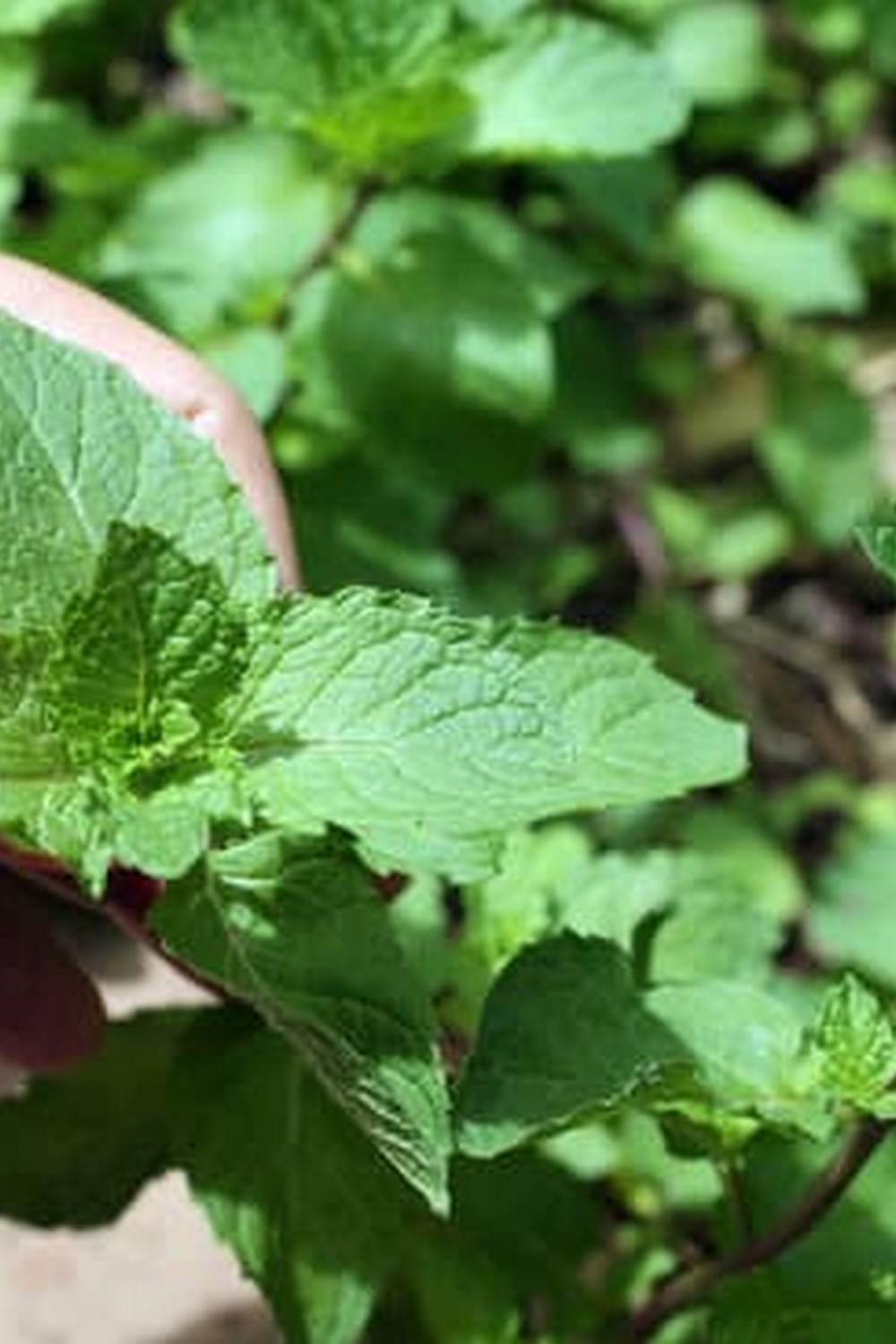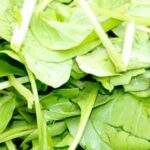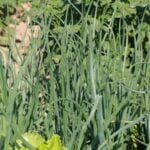Are you looking for a good non-invasive grass to plant around vegetable gardens? Non-invasive grass is an essential element in garden design, providing numerous benefits such as enhancing soil health and suppressing weed growth. In this article, we will explore the importance of non-invasive grass around vegetable gardens, its characteristics, top picks for planting, how to establish it successfully, maintenance tips, and its impact on the visual appeal and functionality of your garden.
Non-invasive grass plays a crucial role in creating a healthy and thriving environment for your vegetable garden. It helps to protect the soil from erosion, improve water retention, and provide a natural barrier against invasive weeds. Additionally, non-invasive grass can enhance the overall aesthetic of your garden while promoting biodiversity and attracting beneficial insects.
When choosing a non-invasive grass for your vegetable garden, there are key characteristics to consider such as low-maintenance requirements, drought tolerance, and environmental friendliness. By incorporating the right type of non-invasive grass into your garden design, you can create a sustainable and practical landscape that complements the growth of your vegetables. Stay tuned as we delve deeper into the benefits of non-invasive grass and how it can positively impact your vegetable garden.
Benefits of Non-Invasive Grass
Non-invasive grasses offer a range of benefits for vegetable gardens, including the enhancement of soil health and the suppression of weed growth. These grasses act as ground cover, helping to prevent erosion and retain moisture in the soil. This is particularly beneficial for vegetable gardens, which require healthy, nutrient-rich soil to thrive. In addition, non-invasive grasses can outcompete weeds, reducing the need for chemical herbicides and manual weeding.
One of the key benefits of non-invasive grass is its ability to improve soil structure and fertility. As the grass grows and spreads, it creates a dense network of roots that helps to aerate the soil and promote good drainage. This can be especially helpful in vegetable gardens where compacted soil can hinder root growth and nutrient uptake. Furthermore, as non-invasive grasses decompose, they contribute organic matter to the soil, enriching it with essential nutrients.
Another advantage of planting non-invasive grass around vegetable gardens is its ability to suppress weed growth. By forming a dense ground cover, these grasses shade out potential weed seeds from germinating and competing with vegetable crops for resources. This natural form of weed control not only reduces the need for labor-intensive weeding but also minimizes reliance on synthetic herbicides that may harm beneficial insects and microorganisms in the garden ecosystem.
| Benefits | Details |
|---|---|
| Enhances Soil Health | Non-invasive grass improves soil structure & fertility |
| Suppresses Weed Growth | Forms dense cover to prevent weed germination & competition with crops |
Characteristics of Non-Invasive Grass
When it comes to planting non-invasive grass around vegetable gardens, it’s important to consider the characteristics of the grass in order to ensure that it complements and benefits the garden. One key characteristic of non-invasive grass is its low-maintenance nature.
This means that once planted, it requires minimal effort to thrive, making it a practical choice for busy gardeners. Non-invasive grass also tends to be drought-tolerant, meaning that it can withstand periods of dry weather without requiring excessive watering.
In addition to being low-maintenance and drought-tolerant, non-invasive grass is also environmentally friendly. This type of grass typically has deep roots that help prevent soil erosion and improve soil health. It also helps to suppress weed growth, reducing the need for chemical herbicides that can be harmful to the environment. By choosing a good non invasive grass to plant around vegetable gardens, gardeners can contribute to a more sustainable and eco-friendly gardening practice.
Furthermore, non-invasive grass often adds beauty and texture to the landscape while providing a functional purpose in vegetable gardens. Its lush green foliage can create an attractive border or ground cover around the garden beds. These characteristics make non-invasive grass an ideal choice for enhancing the visual appeal and functionality of vegetable gardens.
| Characteristics | Description |
|---|---|
| Low-Maintenance | Requires minimal effort to thrive |
| Drought-Tolerant | Able to withstand periods of dry weather without excessive watering |
| Environmentally Friendly | Deep roots prevent soil erosion and suppress weed growth |
Top Picks for Non-Invasive Grass
When it comes to choosing the right non-invasive grass to plant around vegetable gardens, it’s important to consider varieties that not only provide functional benefits, but also enhance the overall aesthetic appeal of the garden. Fortunately, there are several excellent options to choose from, each with its own unique characteristics and benefits.
Blue Fescue
Blue fescue (Festuca glauca) is a popular choice for planting around vegetable gardens due to its striking blue-gray foliage. This low-growing ornamental grass forms dense clumps and requires minimal maintenance, making it an ideal choice for bordering vegetable beds. Blue fescue is drought-tolerant and thrives in well-drained soil, making it a resilient option for gardeners looking for a low-maintenance grass that adds visual interest.
Mondo Grass
Mondo grass (Ophiopogon japonicus) is another great non-invasive grass option for planting around vegetable gardens. This evergreen grass-like plant forms dense clumps of dark green strappy leaves and produces small spikes of lilac flowers in the summer. Mondo grass is an excellent ground cover and provides a lush backdrop for vegetable garden beds. It is also known for its ability to suppress weeds, making it a practical choice for gardeners seeking both functionality and beauty.
Tufted Hairgrass
Tufted hairgrass (Deschampsia cespitosa) is a cool-season perennial grass that boasts delicate, airy seed heads that add texture and movement to the garden landscape. This non-invasive grass is adaptable to various soil types and thrives in full sun to partial shade. Tufted hairgrass provides erosion control and habitat for beneficial insects while serving as an attractive border or filler around vegetable gardens.
With these top picks for non-invasive grass varieties like blue fescue, mondo grass, and tufted hairgrass, gardeners can not only enhance the soil health and suppress weed growth in their vegetable gardens but also elevate the visual appeal of their outdoor space. Consider incorporating these low-maintenance, drought-tolerant, and environmentally friendly grasses into your garden design for both practicality and beauty.
How to Plant Non-Invasive Grass Around Vegetable Gardens
Planting non-invasive grass around vegetable gardens is a great way to enhance the overall health and appearance of your garden space. By choosing the right type of grass and following proper planting techniques, you can create a beautiful and functional addition to your garden. Below are the step-by-step guidelines for successfully establishing non-invasive grass around vegetable gardens:
1. Choose the Right Grass Variety: When selecting non-invasive grass for your vegetable garden, consider factors such as climate, soil type, and sunlight exposure. Some good options to consider include Blue Fescue, Mondo Grass, and Tufted Hairgrass. These varieties are known for their low-maintenance nature and ability to coexist peacefully with other plants.
2. Prepare the Soil: Before planting the non-invasive grass seeds or plugs, it’s important to prepare the soil properly. Clear the area of any existing vegetation or debris, then loosen the soil to a depth of at least 6-8 inches. This will help improve drainage and promote healthy root growth for the new grass.
3. Planting Method: Depending on the type of non-invasive grass you’ve chosen, follow the specific planting guidelines provided with your seed or plugs. In general, seeds should be sown at a shallow depth and covered lightly with soil, while plugs should be spaced according to the recommended distance for optimal coverage.
4. Watering and Care: After planting the non-invasive grass, water thoroughly to ensure good soil contact and provide moisture for germination or establishment. Keep the soil consistently moist during the initial period after planting, then gradually reduce watering as the grass becomes established.
By following these step-by-step guidelines for planting non-invasive grass around vegetable gardens, you can create a beautiful and sustainable addition to your garden space that enhances both its visual appeal and functionality.
Maintaining Non-Invasive Grass
Proper maintenance of non-invasive grass around vegetable gardens is essential to ensure its health and effectiveness in weed suppression. By following some simple tips for watering, fertilizing, and mowing, gardeners can enjoy lush, healthy grass that enhances the overall appearance and functionality of their vegetable gardens.
Watering
When establishing non-invasive grass around your vegetable garden, it is crucial to provide consistent and adequate watering. Newly planted grass will require more frequent watering to encourage root development. However, once established, most non-invasive grasses are drought-tolerant and only need occasional watering during extended dry periods. It is important to water deeply but infrequently to promote deep root growth and prevent shallow rooting, which can make the grass more susceptible to drought stress.
Fertilizing
Non-invasive grasses typically have low fertility requirements, making them a low-maintenance option for gardeners. A slow-release fertilizer applied in early spring can help promote healthy growth without encouraging excessive shoot growth. Additionally, a soil test can provide valuable information about nutrient levels in the soil, guiding gardeners on the specific fertilizer needs of their non-invasive grasses.
Mowing
Proper mowing practices are essential for maintaining the health and aesthetic appeal of non-invasive grass around vegetable gardens. It is important to set the mower at the appropriate height for the specific grass variety, as cutting it too short can stress the plants and make them more susceptible to weeds and pests.
Generally, only one-third of the leaf blade should be removed with each mowing session. Keeping mower blades sharp also ensures clean cuts that promote healthy regrowth of the grass.
By following these basic tips for watering, fertilizing, and mowing, gardeners can easily maintain their non-invasive grass around vegetable gardens, promoting a healthy and visually appealing landscape while suppressing weed growth naturally. Such care allows this natural barrier to effectively enhance soil health while requiring minimal maintenance efforts from the gardener.
Aesthetics and Functionality
Non-invasive grasses play a crucial role in enhancing the visual appeal and functionality of vegetable gardens. They not only provide a natural and aesthetically pleasing look, but they also offer several functional benefits that contribute to the overall health and productivity of the garden.
One of the primary aesthetic advantages of non-invasive grass is its ability to create a beautiful border or edge around vegetable gardens. The soft, flowing foliage of non-invasive grass varieties like Blue Fescue or Mondo Grass can add a touch of elegance and charm to the garden landscape. These grasses can also be used to create pathways or define specific areas within the garden, adding structure and visual interest to the space.
From a functional standpoint, non-invasive grass serves as an effective ground cover that helps to maintain soil moisture and prevent erosion. This is particularly beneficial for vegetable gardens, as it helps to create a stable growing environment for plants and protects the soil from nutrient depletion. Additionally, non-invasive grass can act as a natural weed suppressor, minimizing the need for constant weeding and maintenance while allowing vegetables to thrive without competition from invasive plant species.
Overall, incorporating non-invasive grass into the design of vegetable gardens not only enhances their beauty but also improves their function by promoting soil health and reducing maintenance requirements. By striking a balance between aesthetics and practicality, non-invasive grass becomes an essential element in creating sustainable and attractive vegetable garden landscapes.
- Non Invasive Grass Planting Around Vegetable Gardens
- Blue Fescue
- Mondo Grass
- Tufted Hairgrass
Conclusion
In conclusion, non-invasive grass is a sustainable and practical option for planting around vegetable gardens. The benefits of using non-invasive grass are numerous, from enhancing soil health to suppressing weed growth. Its low-maintenance, drought-tolerant, and environmentally friendly characteristics make it an ideal choice for gardeners looking for a hassle-free and sustainable solution.
When it comes to choosing the right non-invasive grass variety for your vegetable garden, options like Blue Fescue, Mondo Grass, and Tufted Hairgrass are excellent choices. These varieties not only provide functional benefits but also add visual appeal to the garden space, creating a beautiful and natural landscape.
By following the step-by-step guide provided in this article for planting and maintaining non-invasive grass around vegetable gardens, readers can enjoy all the benefits that this sustainable landscaping option has to offer. In addition to enhancing the overall aesthetics of the garden, non-invasive grass also contributes to creating a healthier and more productive environment for growing vegetables. Consider incorporating non-invasive grass into your garden design to experience its many advantages firsthand.
Frequently Asked Questions
What Grasses Are Non Invasive?
There are several non-invasive grass species that are commonly used in landscaping and gardening. Some examples include little bluestem, feather reed grass, switchgrass, and Korean feather reed grass. These varieties add beauty to outdoor spaces without causing any invasive problems.
What Ornamental Grass Doesn’t Spread?
One well-known ornamental grass that doesn’t spread aggressively is the fountain grass. This attractive plant has graceful, arching foliage and striking plumes of flowers, but it generally stays in a clump without invading other areas of the garden or yard.
Are Ornamental Grasses Invasive?
While some ornamental grasses have a reputation for being invasive, not all of them pose a threat to local ecosystems. It’s important to research specific varieties before planting them to ensure they won’t become problematic. With proper care and maintenance, ornamental grasses can be a lovely addition to any landscape without causing invasive issues.

If you’re looking to get into vegetable gardening, or are just looking for some tips on how to make your current garden better, then you’ve come to the right place! My name is Ethel and I have been gardening for years. In this blog, I’m going to share with you some of my best tips on how to create a successful vegetable garden.





